By JULIE MINDA
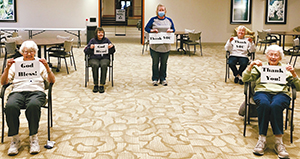
Residents of Villa St. Benedict in Lisle, Illinois — a ministry partner of Benedictine — say a socially distanced thank you to volunteers of the community. This expression of gratitude is in keeping with the Benedictine mission and values that mission leaders help put into action at Benedictine facilities.
CHA has just released its revamped Mission Leader Competency Model. The new version differentiates its guidance on the role of mission leaders by the leaders' level of experience. It includes resources for mission leaders to plot their career path and boost their skills.
First issued nearly 20 years ago, CHA's Mission Leader Competency Model defines the role of the mission leader in Catholic health care and gives practical guidance on performing the work. CHA updates the model periodically to best reflect the evolving role and responsibilities. The version revised by a committee over the past year and released early last month differs in several significant ways from the model it replaces: It assumes that all mission leaders possess the personal qualifications and leadership skills expected of all leaders. It delineates skill sets according to three tiers of experience level and it sets out competencies necessary for promotion to positions of greater responsibility. It also calls out formation, operations, strategy and advocacy as competency areas in their own right, unlike with past iterations of the model.
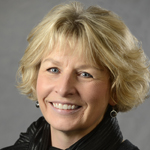
Urbanski
Becky Urbanski is senior vice president of mission integration and marketing for Benedictine of Duluth, Minnesota, and chair of the task force that shepherded the model's revision. She says that as mission leaders, "we have come such a long way," and the new model reflects that. It recognizes that "as mission leaders we need to be courageous, we need to motivate and we need to inspire others, but we also need to measure what we do."
She says the model can be used to advance mission leaders' work throughout the Catholic health ministry.
Changing role
CHA initiated the revision work in June 2019 in partnership with the Reid Group consultancy of Seattle. Over the past decade or so, the period since the model underwent its last major revision, mission leaders have taken on a broader portfolio of responsibilities. The job description has become more standardized across systems and facilities, and many systems have metrics to track a leader's contributions and performance toward goals.
While recent iterations of the Mission Leader Competency Model had kept up with the maturation of the role, the new version of the tool is clearer and more concise about the breadth of responsibility mission leaders assume, elevating the formation, operations, strategy and advocacy functions.
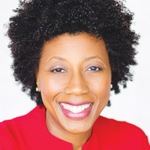
Cole-Frieman
Wanda Cole-Frieman is senior vice president of talent acquisition for CommonSpirit Health and a member of the CHA task force that revised the model. She says, "the executive mission leader's role is no longer only the spiritual guide for a Catholic health facility but rather to be a full executive leader, who also needs to understand the balance sheet and strategy — and to comment on finances and strategy."
"We're asking (senior) mission leaders to show up in this way, and the Mission Leader Competency Model shows them how to do that," she says.
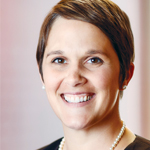
Meyer McGrath
Carrie Meyer McGrath, CHA director of mission services, says, "we want every mission leader to see themselves in this model, but we want them to also see where they can stretch."
Three tiers, seven competencies
To secure input for creating the model, the Reid Group interviewed more than 30 key stakeholders including ministry sponsors, chief executives and other C-suite executives; surveyed more than 600 mission leaders; and convened focus groups made up of system executive mission leaders.
The 50-page, 2020 edition of the Mission Leader Competency Model is available at chausa.org/missionleadercompetencies in electronic form, and it can be downloaded there as a booklet.
The publication has a section on each of seven core competencies: Catholic identity, strategy, operations, formation, spirituality, ethics and advocacy. Each section breaks out operational competencies for entry-level leaders, mid-level and executive mission leaders.
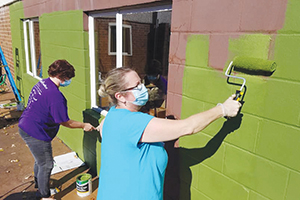
Associates at Cerenity Senior Care in White Bear Lake, Minnesota, a Benedictine ministry partner, demonstrate Benedictine's core value of stewardship by painting an accent wall in a courtyard patio.
For example, the strategy competency of the model calls upon the mission leader to apply Catholic theological and ethical tradition to strategic discussions. Entry-level mission leaders should be able to understand and articulate the principles, mid-level mission mangers should be able to invite discussion of the principles in senior leadership meetings, while executive mission leaders should be innovative in bringing forth new strategic opportunities to advance the mission.
A self-assessment coaching tool breaks out how mission leaders can improve in each competency and provides a virtual coach to measure progress. When a mission leader completes the assessment, that person will receive coaching tips tailored to his or her responses. The tips are computer-generated — CHA developed them based on consultation with experts in the mission field.
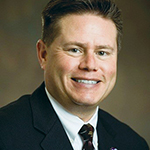
Gonzales
Dennis Gonzales, CHA senior director of mission innovation and integration, says this career coaching tool "provides a blueprint or guide, including for mission leaders coming into the role from different disciplines, for concrete ways to improve their skills."
Practical applications
Catholic organizations can use the model to clarify internally or externally what the mission role is, to enhance formation and development of mission leaders and for succession planning.
CommonSpirit's Cole-Frieman says that system likely will use the model as a reference as it is standardizing its job descriptions, performance management systems, and human resources management work. Cole-Frieman says the revised Mission Leader Competency Model will help CommonSpirit and other ministry systems to create career ladders and pathways for mission staff.
Benedictine's Urbanski says she expects the model will help with attracting new recruits to careers in mission because it will enable the system to more clearly define mission leadership and illustrate the role's centrality within the ministry.
CHA's Gonzales notes that the model is applicable to organizations across the continuum of Catholic health care as well as to other types of Catholic institutions, including universities and social service agencies. He adds that the model also is of interest to academics who prepare students for mission leader roles and already are building the concepts presented in the new model into their curriculum.
CHA's Meyer McGrath says, "People in the ministry should remember that this is their tool. It came from them and it's theirs to use and run with."